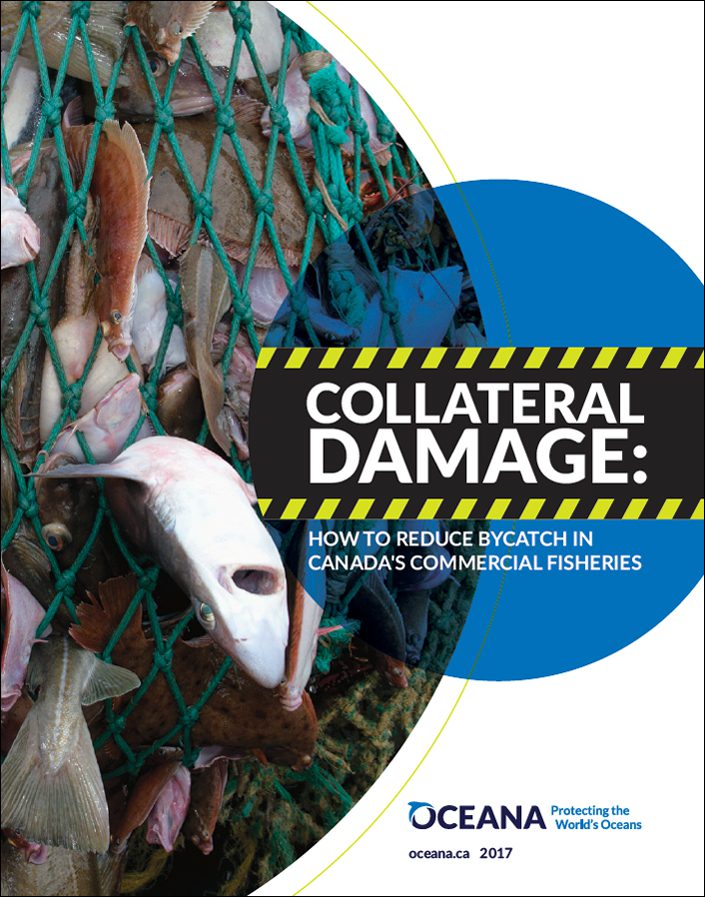Report | May, 2017
Collateral Damage: How to Reduce Bycatch in Canada’s Commercial Fisheries
New report reveals that the Canadian government is inadequately addressing one of the biggest threats to our oceans
Up to 10.3 million tonnes of sea life is unintentionally caught each year around the world, captured in nets, lines and other gear. Some of this is kept and sold, or released safely; but far too much is put back in the ocean, either dead or dying. In Canada, this includes endangered and threatened species like whales, turtles, sharks and fish. For example, an estimated 1,200 endangered loggerhead turtles are caught each year on pelagic longlines in the swordfish fishery.
Oceana Canada’s report revealed that there are big holes in Canadian data, that our regulatory approach is inadequate and that hundreds of species end up as bycatch.
Some key findings of the report include:
- The north Atlantic Swordfish fishery discards approximately 44.8% of its catch, including threatened and endangered sharks and sea turtles, as well as dolphins and whales.
- The Eastern offshore lobster fishery discards approximately 22%, including endangered species like Atlantic cod and northern wolffish.
By acting now, the government has the opportunity to be a global leader in ocean conservation and secure a sustainable food source for the world’s growing population. The report recommends that Fisheries and Oceans Canada release a national plan to:
1. Count everything that is caught in a fishery, including bycatch species;
2. Cap the amount of wasted catch in each fishery using science-based limits;
3. Control and avoid bycatch by making improvements such as using more sustainable fishing gear;
4. Protect endangered and threatened species so their populations can recover.
- Read the press release
- Download the report: Collateral damage: How to reduce bycatch in Canada’s commercial fisheries
- Download the full scientific report
- Sign the petition to call on Fisheries and Oceans Canada to reduce bycatch
- Download Appendix I: Canadian Legislation, Appendix II: Data Tables and Appendix III: Details on catch composition of each fleet


